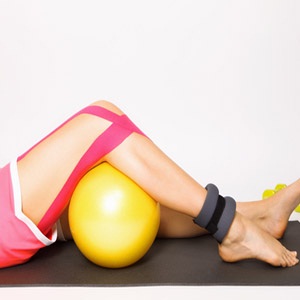
Some training methods are better than others at preventing knee ligament injuries in young women, researchers advise.
Based on 14 previous studies, the researchers say training programmes that focus on strengthening the legs and hips and stabilising the abdomen are the most effective for preventing injury to the anterior cruciate ligament (ACL), and doing more than one type of exercise is also important.
Read: Knee injuries
"We know neuromuscular training can reduce ACL injury in female athletes, but we were not sure what exercises are the best to attain the maximal prophylactic effects," said Dai Sugimoto of The Micheli Centre for Sports Injury Prevention and the Boston Children's Hospital Orthopaedics and Sports Medicine department, in Massachusetts.
Stabilising knee ligament
The ACL is the key stabilising ligament in the knee, and is most often injured during sports that involve quick turns or pivoting movements.
ACL injuries are very serious and can take a long time to heal, the researchers write in the British Journal of Sports Medicine. College athletes with ACL injuries lose more time on the field than athletes with ankle or traumatic head injuries, according to the researchers.
Young women facing the greatest risk are those who play sports involving a lot of pivoting, such as soccer, basketball, lacrosse and handball, according to Sugimoto. He added that the most common age for women to be injured is around 14 to 17 years.
Grethe Mykelburst, who outlined the risks involved with ACL injury in an email, said, "it takes you out of your sport for 6-12 months, and some don't succeed to return to their previous level."
Risk of osteoarthritis
She added that the risk of getting osteoarthritis, a degenerative condition, in the knee is high after injury.
Mykelburst, a sports physical therapist and associate professor at the Oslo Sport Trauma Research Centre in Oslo, Norway, was not involved in the review.
Sugimoto's team analysed 14 studies of exercise intervention programmes, looking specifically at four different exercise approaches including balance, jump training, abdomen stabilising exercises and strengthening of the legs and hips.
Training programmes that aimed to build strength in the back of the legs and in the hips significantly reduced the number of ACL injuries when compared with programmes that did not. That was also true of programmes that focused on strengthening and developing more control of the abdomen.
Read: Preventing knee pain
Programmes that included more than one type of exercise were significantly more effective than those using only one type. "Neuromuscular training has to incorporate many exercise modes," Sugimoto told Reuters Health. "Performing only one exercise mode seems ineffective."
The researchers note that while balance and jumping exercises were somewhat helpful in reducing injury, they were not effective unless combined with other exercises.
The study lists a number of specific helpful exercises, including Russian hamstring curls, sit-ups, push-ups and bench press. Sugimoto emphasized the hamstring curls in particular, as they work both to strengthen the legs and hips and require abdomen control.
Neuromuscular training
"With inclusion of these exercises as well as a variety of exercise modes, athletes can attain the fullest benefit from neuromuscular training and prevent ACL injury," Sugimoto said.
Every year 350,000 people seek ACL reconstruction surgery in the United States, the authors point out.
Sugimoto said that although surgery is the best available treatment, 24 to 30 percent of high school athletes who undergo the surgery tear their ACL again within the next several years.
"That's why we need to prevent ACL injury in first place to avoid subsequent ACL injury and preserve a healthy knee joint," Sugimoto said.
Read: Treating knee pain
"The evidence is strong that neuromuscular training works," Mykelburst agreed. "As an athlete or a coach, you can't afford not using the prevention programme and exercises that exist," she added.
Read More:
Meniscus injury
Arthroscopy can also repair ankles
Common knee surgery may lead to osteoarthritis and loss of cartilage
Image: Exercise for injured knee from Shutterstock.




 Publications
Publications
 Partners
Partners











